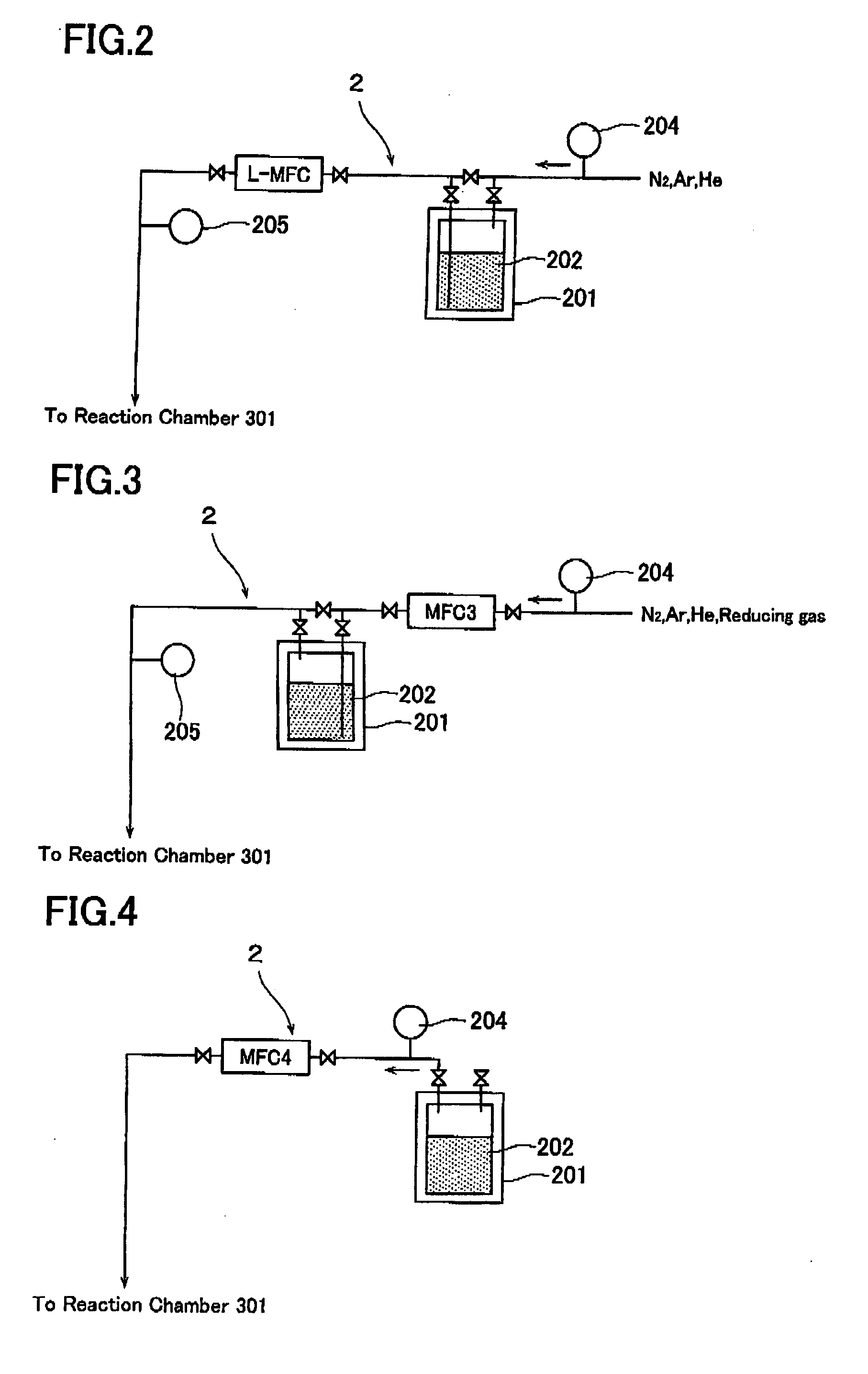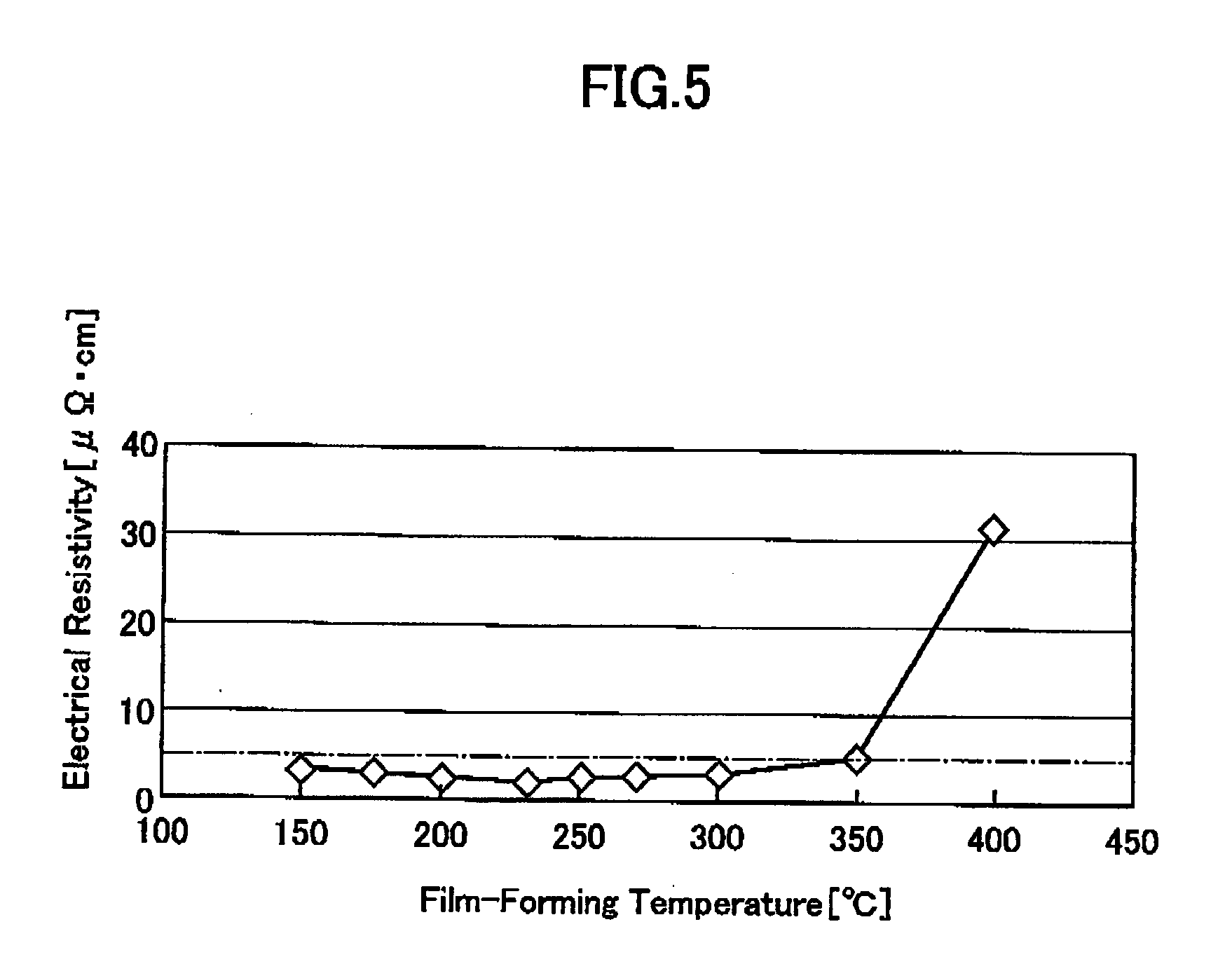Process for formation of copper-containing films
a technology of copper-containing films and forming apparatus, which is applied in the direction of coatings, metallic material coating processes, chemical vapor deposition coatings, etc., can solve the problems of copper-containing wire formation from such a plating solution, difficult to penetrate deep or interior, and difficult to achieve the formation of copper-containing wires, etc., to achieve good reproducibility, improve the availability factor of the copper-containing film-forming apparatus, and reduce the specific resistance
- Summary
- Abstract
- Description
- Claims
- Application Information
AI Technical Summary
Benefits of technology
Problems solved by technology
Method used
Image
Examples
preparation example 1
Synthesis of Methyl 2-Trimethylsilyloxy Isobutyrate
[0043]To a 1 L inner volume flask equipped with a stirring machine, a thermometer and a dropping funnel, there were added 54.0 g (457 mM) of methyl 2-hydroxy isobutyrate, 86.0 g (464 mM) of tri-n-butylamine and 300 ml of methyl cyclohexane after replacing the internal atmosphere of the flask or the reaction system with argon gas. Then 49.5 g (456 mM) of chloro-trimethylsilane was gently dropwise added to the contents of the flask, while maintaining the temperature thereof at 15° C. and subsequently, the contents of the flask were reacted with one another at that temperature for one hour, with stirring. After the completion of the reaction, 120 ml of water was added to the reaction liquid while ice-cooling the same. The resulting organic phase was separated from the reaction liquid, followed by the washing of the same with water, and the subsequent drying of the organic phase over anhydrous sodium sulfate. After the filtration of the...
preparation example 2
Synthesis of 2-Methyl-2-Trimethylsylyloxy-3,5-Heptanedione
[0047]To a 200 ml inner volume flask equipped with a stirring machine, a thermometer and a dropping funnel, there were added 11.2 g (99.8 mM) of potassium t-butoxide and 40 ml of tetrahydrofuran after replacing the internal atmosphere of the flask or the reaction system with argon gas. Then 7.20 g (99.8 mM) of 2-butanone was gently dropwise added to the contents of the flask, while water-cooling the same, followed by the stirring thereof for 10 minutes, the dropwise addition of 9.70 g (51.0 mM) of methyl 2-trimethylsylyloxy isobutyrate prepared according to the same method used in Preparation Example 1 and the subsequent reaction of these ingredients at 5° C. for one hour with stirring. After the completion of the reaction, to the reaction system, there were added 8 g (133 mM) of acetic acid and 16 ml of water while ice-cooling the same. The resulting organic phase was separated from the reaction system, followed by the washi...
preparation example 3
Synthesis of Bis(2-Methyl-2-Trimethylsylyloxy-3,5-Heptanedionate) Copper(II) (Cu(SOED)2)
[0051]To a 500 ml inner volume flask equipped with a stirring machine, a thermometer and a dropping funnel, there were added 35.63 g (154.7 mM) of 2-methyl-2-trimethylsilyloxy-3,5-heptanedione prepared according to the same method used in Preparation Example 2 and 100 ml of methyl cyclohexane and then a solution of copper acetate monohydrate (16.1 g, 80.8 mM) in 240 ml of water was gently dropwise added to the contents of the flask and these components were reacted with one another at room temperature for one hour with stirring. After the completion of the reaction, the resulting organic phase was separated from the reaction system, followed by the concentration of the organic phase, and the subsequent distillation of the resulting concentrate under reduced pressure (165° C., 27 Pa) to thus give 34,2 g (isolation yield: 81%) of bis(2-methyl-2-trimethylsylyloxy-3,5-heptanedionate) copper(II) as a ...
PUM
| Property | Measurement | Unit |
|---|---|---|
| temperature | aaaaa | aaaaa |
| partial pressure | aaaaa | aaaaa |
| temperature | aaaaa | aaaaa |
Abstract
Description
Claims
Application Information
 Login to View More
Login to View More - R&D
- Intellectual Property
- Life Sciences
- Materials
- Tech Scout
- Unparalleled Data Quality
- Higher Quality Content
- 60% Fewer Hallucinations
Browse by: Latest US Patents, China's latest patents, Technical Efficacy Thesaurus, Application Domain, Technology Topic, Popular Technical Reports.
© 2025 PatSnap. All rights reserved.Legal|Privacy policy|Modern Slavery Act Transparency Statement|Sitemap|About US| Contact US: help@patsnap.com



